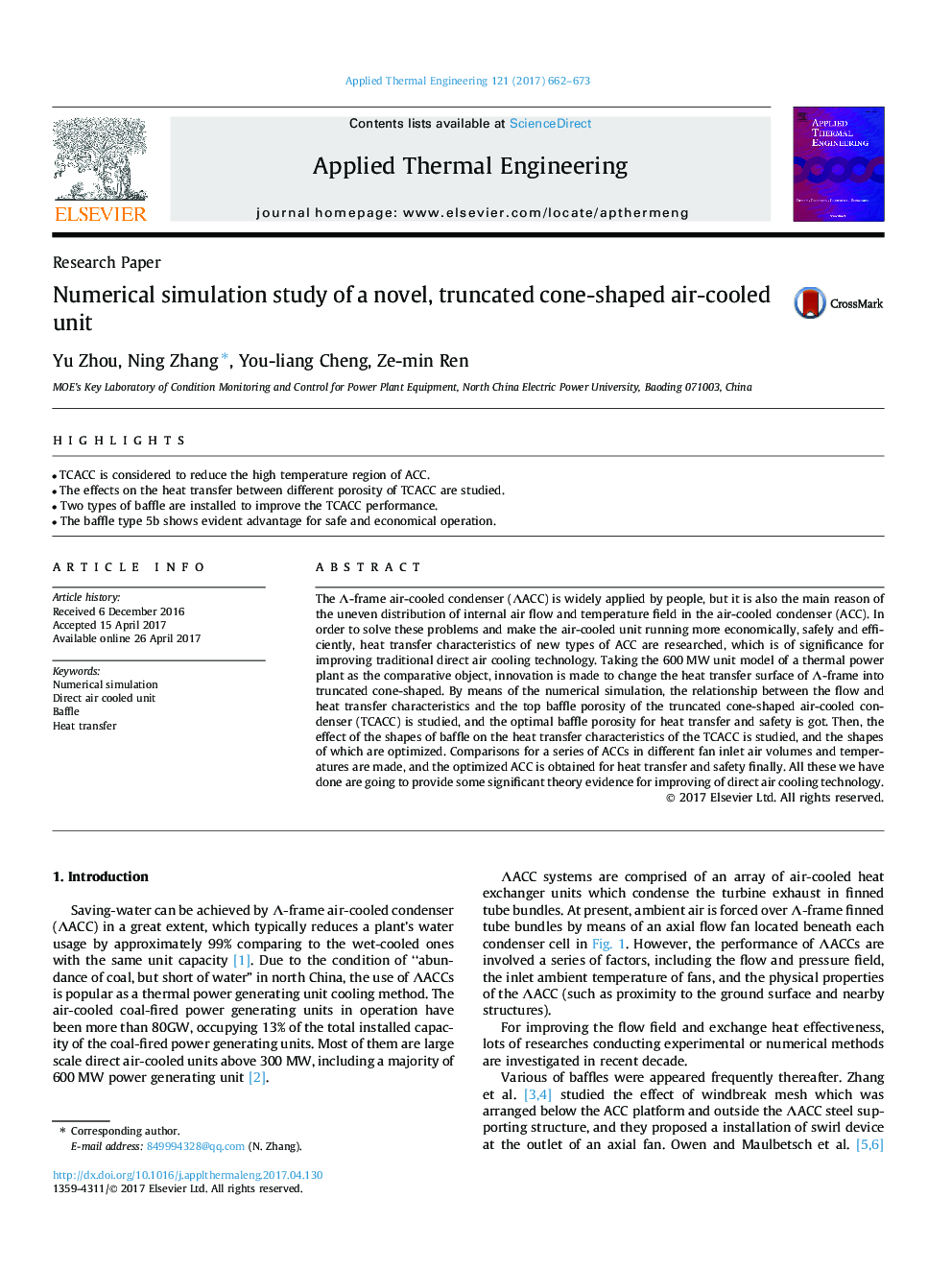| Article ID | Journal | Published Year | Pages | File Type |
|---|---|---|---|---|
| 4991117 | Applied Thermal Engineering | 2017 | 12 Pages |
Abstract
The Î-frame air-cooled condenser (ÎACC) is widely applied by people, but it is also the main reason of the uneven distribution of internal air flow and temperature field in the air-cooled condenser (ACC). In order to solve these problems and make the air-cooled unit running more economically, safely and efficiently, heat transfer characteristics of new types of ACC are researched, which is of significance for improving traditional direct air cooling technology. Taking the 600Â MW unit model of a thermal power plant as the comparative object, innovation is made to change the heat transfer surface of Î-frame into truncated cone-shaped. By means of the numerical simulation, the relationship between the flow and heat transfer characteristics and the top baffle porosity of the truncated cone-shaped air-cooled condenser (TCACC) is studied, and the optimal baffle porosity for heat transfer and safety is got. Then, the effect of the shapes of baffle on the heat transfer characteristics of the TCACC is studied, and the shapes of which are optimized. Comparisons for a series of ACCs in different fan inlet air volumes and temperatures are made, and the optimized ACC is obtained for heat transfer and safety finally. All these we have done are going to provide some significant theory evidence for improving of direct air cooling technology.
Related Topics
Physical Sciences and Engineering
Chemical Engineering
Fluid Flow and Transfer Processes
Authors
Yu Zhou, Ning Zhang, You-liang Cheng, Ze-min Ren,
